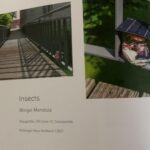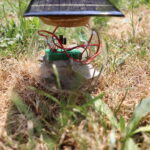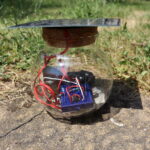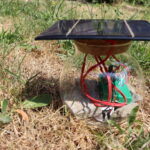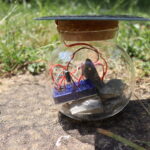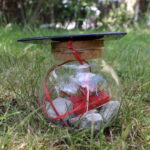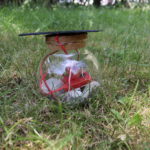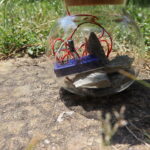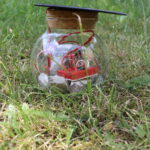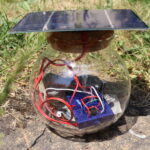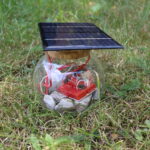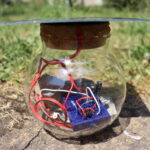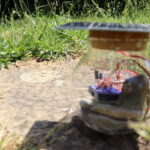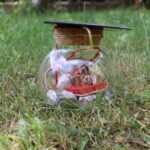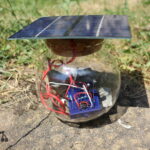Insects (2021)
3 Sound objects with solar panels, sound-light responsive circuit
// Español
¡Cuánta quietud!
La voz de la cigarra
taladra rocas.
—Ueda, Matsuo Bashō (1644 – 1694)
Los insectos utilizan sus cantos como una forma de atraer a sus parejas, establecer territorio y comunicarse con otros individuos de su especie. Estos pequeños insectos crean sonidos distintivos utilizando partes específicas de su cuerpo.
De manera similar, los objetos sonoros “Insects” reaccionan al cambio de luz para hacerse presentes y así poder comunicarse entre sí y con los espectadores. También ayudan a establecer el espacio donde se encuentran, delimitando el ámbito perceptual del oyente.
Además, es posible que el espectador interactúe con los objetos, creando nuevos espacios o utilizándolos como instrumentos. Al bloquear cierta cantidad de luz, estos insectos responderán con diferentes tonos o alturas sonoras. Los objetos sonoros “Insects” crean una relación entre el espectador, su entorno que producen los objetos.
//Enlgish
Quietness—
Sinking into the rocks,
A cicada’s cry.
—Ueda, Matsuo Bashō (1644 – 1694)
Insects use their sounds as a way to attract their mates, establish territory, and communicate with other individuals of their species. These small insects create distinctive sounds using specific parts of their bodies.
Similarly, the sound objects “Insects” react to changes in light to make themselves present and communicate with each other and the audience. They also help establish the space they inhabit, defining the perceptual realm of the listener.
Furthermore, it is possible for the audience to interact with the objects, creating new spaces or using them as instruments. By blocking a certain amount of light, these insects respond with different tones or pitches. The sound objects “Insects” create a relationship between the viewer, the environment they produce, and the objects themselves.
// Deutsch
Stille –
den Fels durchdringt
das Zirpen der Zikade
(Matsuo Basho, 1644-1694)
Insekten nutzen ihre Klänge, um ihre Partner anzulocken, Territorien zu etablieren und mit anderen Individuen ihrer Art zu kommunizieren. Diese kleinen Insekten erzeugen charakteristische Klänge, indem sie spezifische Teile ihres Körpers verwenden.
Ähnlich reagieren die Klangobjekte “Insects” auf Veränderungen im Licht, um sich präsent zu machen und miteinander und dem Publikum zu kommunizieren. Sie tragen auch dazu bei, den Raum, den sie bewohnen, zu definieren und die Wahrnehmungssphäre des Zuhörers zu bestimmen.
Darüber hinaus ist es für das Publikum möglich, mit den Objekten zu interagieren, neue Räume zu schaffen oder sie als Instrumente zu verwenden. Indem sie eine bestimmte Menge Licht blockieren, reagieren diese Insekten mit unterschiedlichen Tönen oder Tonhöhen. Die Klangobjekte “Insects” schaffen eine Beziehung zwischen dem Betrachter, der Umgebung, die sie erzeugen, und den Objekten selbst.

